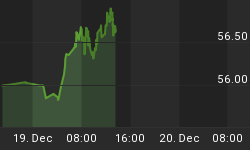To no one's surprise, the new Chairman of the Federal Reserve is continuing his predecessor's role of economic cheerleader. Recently, the market was comforted by Mr. Bernanke's first Congressional testimony that inflation was tame and the economy was strong. This type of perfunctory mantra, however, merely serves to gloss over the massive imbalances in today's economy.
Let's examine his assertion that the economy is strong and in no danger slowing even further or even dipping back into recession. The GDP increased by just 1.6% in Q4 of 2005, a measurable slowdown from it recent rate of growth and a disappointment which has been brushed aside by the mainstream media as an aberration. Moreover, the real GDP number might have been negative if inflation was measured accurately by the Bureau of Labor Statistics. Further, the economy may continue to wane as the year progresses due to higher inflation, higher interest rates, growing twin deficits, negative consumer savings rates and negative real wage growth.
And let's not forget the biggest reason to worry: the housing market.
According to Investor's Business Daily, during the first 9 months of 2005 home equity extraction totaled 2.6 Trillion dollars -- twice the amount of withdrawals during all of 2000! And in the last 5 years alone, the average home price has increased 51%.
Given the well-documented slowdown in home price appreciation lately as well as in new and existing home sales, it is difficult to imagine an economy that can sustain robust growth without that continued stimulus and it is hard to overestimate the ramifications of this deceleration. There are so many industries on the periphery of the housing market, from real estate and mortgage brokers to the construction industry and commodities, that the layoffs already being seen in the mortgage lending industry are likely to increase throughout the housing-related sector, possibly boosting total unemployment and further lowering GDP rates.
So, Ben Bernanke will most likely raise short term rates once or twice in first half of this year to prove his mettle as an inflation fighter, but many suspect that he will be forced to move from the brake to the accelerator in whiplash fashion. Indeed, in his own words and studies the new Fed Chairman has shown himself to be a deflation, not inflation, hawk. Reading his essays on the Great Depression gives clear insight to his tenet that slow economic growth must be combated with increased money supply. In his speeches he has alluded to Milton Friedman's quote about dropping money from helicopters and by now the world is well aware of his own assertion that the U.S. has a technology called the printing press to combat deflation.
Well, Mr. Bernanke may need to fire up that helicopter in the second half of '06; with consumers perhaps losing their go-to stimulus of home equity extractions due to higher short-term interest rates, the economy could be headed for further slowing.
Anachronistic and specious doctrines adopted by Bernanke will be proved false no matter how esteemed they are held by academia. For example, why does the Fed continue to concentrate on staid Phillips curve theories such as to what constitutes full employment? A productive workforce with low unemployment is a positive, not a negative, as it increases the amount of goods with which to absorb any excess money supply. What the Fed should be concerned with is keeping the monetary base stable and letting the free market dictate interest rates.
The United States is running short of time in which to prepare for the next decade's demographic and entitlement challenges and we simply cannot afford another Fed Chairman's tenure like that of Alan Greenspan, who spoke plainly about such challenges only during his final weeks in office. If Ben Bernanke continues to target employment and GDP rates by increasing the cost of money without curbing its supply, he will add to inflationary pressures and put our economy at risk of a stagflationary cycle. And it may be his unfortunate and ironic fate to not just have studied the Great Depression, but to be fighting a meaningful economic decline early in his own tenure as Chairman of the Federal Reserve.
In diversifying some of their assets into global markets in light of the concerns above, investors are increasingly turning to Canada for non-U.S. Dollar exposure. To learn more, get "Go North!" our exclusive, free report on Canadian royalty trusts. And to buy physical gold bullion for only .4%, contact us to gain our exclusive discount code on BullionVault.com.















